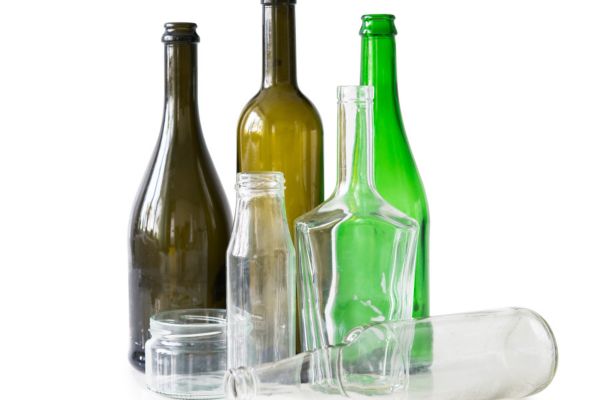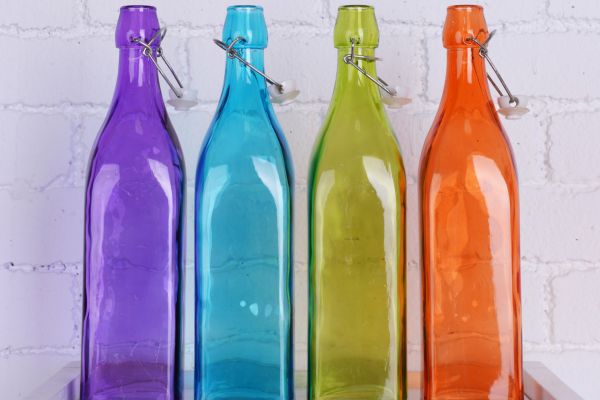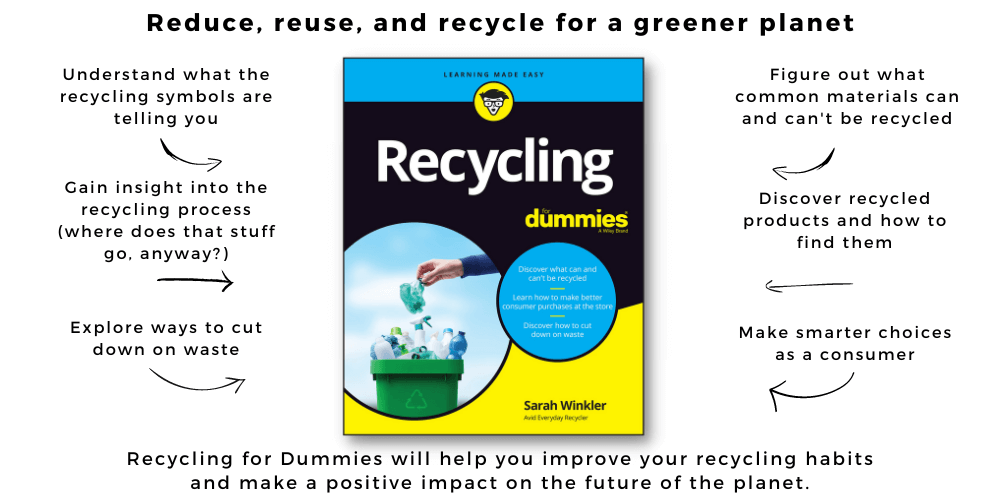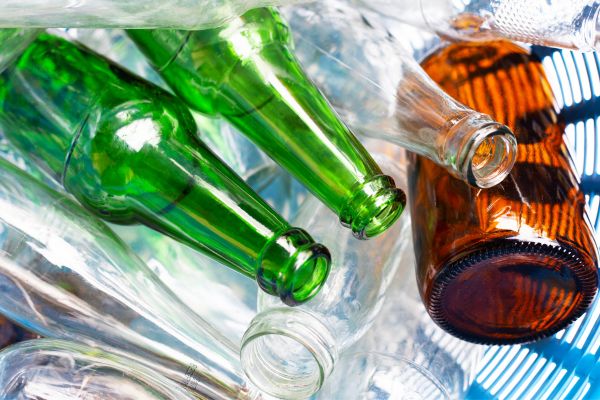RECYCLING GLASS IN CURBSIDE BINS
Congratulations on making it to Lesson 6. You are now more than halfway through the 10 Lesson Conquer Curbside Recycling Challenge. I hope you are learning a lot of useful tips and information.
The first thing to consider when it comes to glass and curbside recycling is whether your curbside program accepts glass and, if it does, whether you have to put it into a separate bin.
Many curbside services do not collect glass. This might seem counterintuitive, given glass is so easily recycled. In fact, did you know that glass can be recycled over and over again without any loss of quality?
So why is it that some locations don’t accept glass at all? There are a couple of reasons:
- Firstly, glass is notorious for breaking up during sorting at the recycling facility. This shattered glass can become embedded in plastic and paper waste, making recycling more difficult. It’s like another sort of contamination and can lead to the plastic or paper being disposed of in a landfill.
- Secondly, there may be no available market for the recycled material. That means there may not be any nearby glass manufacturers that want to buy the processed glass (remember, we learned on Day 2 that recycling needs to have an end market to be successful). Glass is very heavy, and it may be too costly for it to be transported to a distant market.
If your curbside recycling service does not collect glass, there are many other options for recycling your glass, including bottle banks, container deposit depots, local transfer stations, and recycling centers. Be sure to check their rules before you head there.
Only bottles and jars
When it comes to glass recycling in curbside services, the most important thing to remember is that most services only accept jars and bottles. This is because these items are made from annealed glass, also called standard glass, the most basic recipe for glass. When they say that glass is infinitely recyclable, they are really only referring to this annealed type of glass.

Many of the other items you find around your home, like drinking glasses, vases, mirrors or windows, and light fittings, are made from different types of glass. These different types of glass have either been treated with heat, had chemicals added to them, or been layered with other materials such as plastic.
All of these procedures alter the properties of the glass and, in most cases, make it much more difficult to recycle. Plus, it can no longer be recycled with the standard glass from bottles and jars. For example, a drinking glass cannot be recycled with a wine bottle. They cannot be recycled together because the glass used to make the drinking glass has likely been heat-treated, and therefore it will contaminate the glass from a wine bottle when it is melted down during recycling.
You can learn more about types of glass here.
Different colored glass
Another rule you may have encountered is when your curbside collection service limits the glass colors accepted in your bin or asks you to sort them into different bins before pick-up.
The color of glass can’t be changed or removed. So you can’t produce clear glass from green glass, for example. You may mix different colors, but you will likely just get a murky tint. Sorting the glass into colors helps increase the value of the recycled product. It allows them to make a new green bottle from recycled green bottles or a purple bottle from purple bottles, and so on. This is why in some locations, they ask you to separate the glass. It makes it much more recyclable and more likely that the glass will be turned into a new glass jar or bottle.

Some locations don’t require separation because they have optical sorters that can separate the different colored glass. At the same time, other locations may not request you to separate colors because they have a different market for their recycled glass. Recycled glass can also be used to make roads, as fill-in construction sites, or even as a topper on landfills. You can imagine that these end markets are not all fussed about the color of the glass.
Glass Recycling Summary
Here are the top takeaways.
- Check if your local curbside or other service accepts glass.
- Check if they accept all glass or only certain colors.
- Only put jars and bottles in your curbside recycling bin unless specifically requested. Keep all other glass items out of your curbside recycling bin. If your household items are in good condition, please consider donating them for reuse.
TASK
Go back over your checklist and review the questions on glass recycling to be sure that you understand your local rules.
SUGGESTED READING
In Lesson 7, we look at paper and cardboard recycling.
Let’s conquer recycling together.
You can jump to any of the other lessons below:
- Conquer Curbside Recycling Challenge Page
- Lesson 1 – WHAT IS RECYCLING AND WHY IS IT IMPORTANT
- Lesson 2 – FINDING YOUR RECYCLING RULES
- Lesson 3 – RECYCLING CODES AND SYMBOLS
- Lesson 4 – REDUCING CURBSIDE RECYCLING CONTAMINATION
- Lesson 5 – GETTING FAMILIAR WITH SOME COMMON RULES
- Lesson 6 – RECYCLING GLASS IN CURBSIDE BINS
- Lesson 7 – RECYCLING PAPER IN CURBSIDE BINS
- Lesson 8 – RECYCLING METAL IN CURBSIDE BINS
- Lesson 9 – RECYCLING PLASTIC IN CURBSIDE BINS
- Lesson 10 – RECYCLING CURBSIDE BINS OVERVIEW
If you liked this challenge, then you are definitely going to like my book “Recycling for dummies”. It has 384 pages filled with knowledgeable and actionable content for you to become a better recycler. Find out more here.















